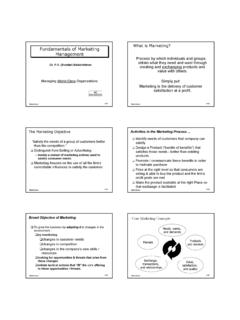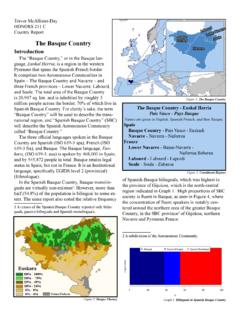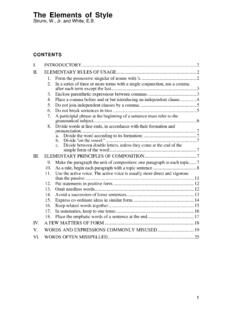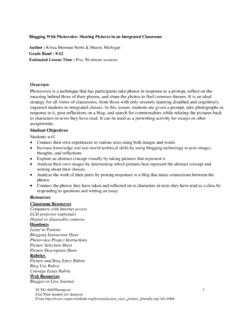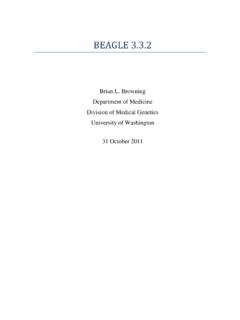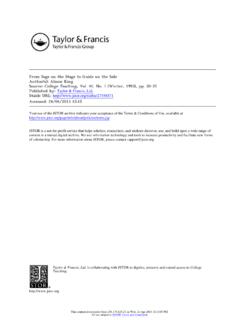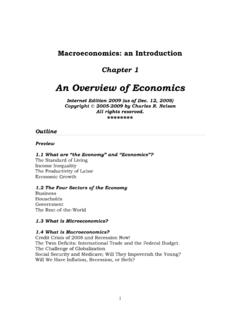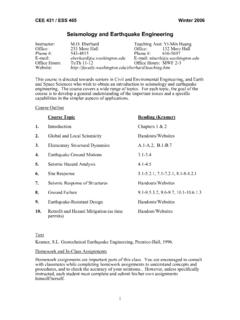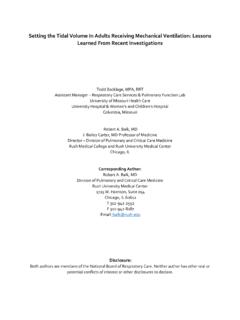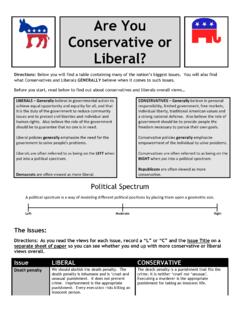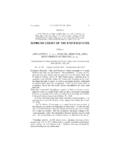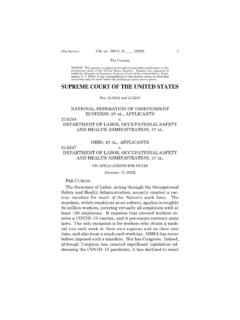Transcription of CHAPTER 02 WHO AM I? - University of Washington
1 January 8, 2013 at 10:30 AM page 1 of 52 C HAP T E R 02 WH O AM I ? I. WHO AM I? .. 3 A. THREE COMPONENTS OF THE EMPIRICAL SELF (OR ME) .. 4 B. EXTENSIONS AND REFINEMENTS OF JAMES S THEORY .. 9 II. SELF-FEELING, SELF-SEEKING, AND SELF-PRESERVATION .. 14 A. SELF-FEELINGS AS BASIC EMOTIONS .. 15 B. SELF-CONSCIOUS EMOTIONS .. 15 C. SELF-FEELINGS AND SELF-STANDARDS .. 17 D. SELF-FEELINGS AND SOCIAL RELATIONSHIPS .. 20 E. SUMMARY AND SYNTHESIS .. 21 III. GROUP DIFFERENCES IN THE SELF-CONCEPT .. 21 A. CULTURAL DIFFERENCES IN THE SELF-CONCEPT .. 21 B. ETHNIC DIFFERENCES WITHIN THE UNITED 28 C. GENDER DIFFERENCES IN THE SELF-CONCEPT .. 30 IV. SELF-CONCEPT ACTIVATION .. 31 A. SOCIAL FACTORS ACTIVATE SELF-REPRESENTATIONS .. 32 B. INCIDENTAL FACTORS ACTIVATE SELF-REPRESENTATIONS .. 34 C. MOTIVATIONAL FACTORS ACTIVATE SELF-REPRESENTATIONS .. 35 D. STABILITY VS. MALLEABILITY IN THE SELF-CONCEPT .. 36 V. CHAPTER SUMMARY .. 37 VI. REFERENCES .. 40 January 8, 2013 at 10:30 AM page 2 of 52 C HAP T E R 02 WH O AM I ?
2 Former President Lyndon Johnson once described himself as a free man, an American, a United States Senator, a Democrat, a liberal , a conservative , a Texan, a taxpayer, a rancher, and not as young as I used to be nor as old as I expect to be (cited in Gergen, 1971). Although not everyone thinks of themselves in such varied terms, everyone has a wealth of self-knowledge. They have ideas about their physical qualities and abilities, their social roles, their opinions, talents, and personality traits, and more. Collectively, these ideas comprise the ME. In this CHAPTER , we will examine the nature of the ME. Here we will be concerned with understanding how people answer the question Who am I? Our analysis will begin by reviewing the work of William James, who wrote extensively on the topic in CHAPTER 10 of his 1890 publication The Principles of Psychology. We will see that many of the ideas William James discussed over 100 years ago still apply today.
3 At the same time, we will also see that recent research has extended and refined many of James s ideas. The second section of this CHAPTER examines the affective and motivational aspects of the self. James devoted considerable attention to understanding the nature of self-feelings and the behaviors these feelings evoke. We will discuss his ideas and also examine recent research that has looked at the relation between various self-views ( , who you think you should be) and self-feelings. The third section examines group differences in the self-concept. Here you will learn about cultural and gender differences in the way people answer the question Who am I? Afterward, we will examine factors that activate different self-views. People think of themselves in many ways, but only some of these self-views are active at any given time. In the final section of this CHAPTER , you will learn about various situational factors that activate one or another of our self-views.
4 One more thing before begin. The study of the ME can be undertaken at several levels of analysis. First, we can talk about the self-concept, which includes all of the characteristic ways a person thinks of herself. For example, a person might say I am a student or I am carefree. Various names have been given to these specific characterizations, including self-conceptions, self-views, self-images, and self-descriptions. These terms are essentially interchangeable, as all refer to specific ideas people have about who they are . We can also take a broader view and examine various identities, such as one s gender identity, racial identity, or ethnic identity. These identities include a variety of organized thoughts about who we are, as well as their importance to us. For example, gender identity might include not only one s sexual orientation, but also how central gender is to the person s self-definition and the way the person evaluates his gender identity.
5 Finally, we can speak about identity in an even broader sense. Here we are referring to our ideas about who we are as a person. When used in this way, identity refers not to any specific thoughts or ideas in any one area or domain, but to an integrated January 8, 2013 at 10:30 AM page 3 of 52 understanding of ourselves in general. I. Who am I? Before you read more about the nature of the ME, take a moment to reflect on how you think about yourself by completing the questionnaire shown in Table Feel free to include aspects of your personality, background, physical characteristics, hobbies, things you own, people you are close to, and so forth. In short, anything that would help another person know what you are like. Table Who am I? Imagine you want someone to know what you are really like. You can tell this person 20 things about yourself ( , your personality, background, preferences, physical characteristics).
6 What would you tell them? 1. _____ 2. _____ 3. _____ 4. _____ 5. _____ 6. _____ 7. _____ 8. _____ 9. _____ 10. _____ 11. _____ 12. _____ 13. _____ 14. _____ 15. _____ 16. _____ 17. _____ 18. _____ 19. _____ 20. _____ January 8, 2013 at 10:30 AM page 4 of 52 A. Three Components of the Empirical Self (or ME) William James used the term the empirical self to refer to all of the various ways people answer the question Who am I? His analysis is very broad. The Empirical Self of each of us is all that he is tempted to call by the name of me. But it is clear that between what a man calls me and what he simply calls mine the line is difficult to draw. We feel and act about certain things that are ours very much as we feel and act about ourselves. Our fame, our children, the work of our hands, may be as dear to us as our bodies are, and arouse the same feelings and the same acts of reprisal if attacked. (p. 291)1 James went on to group the various components of the empirical self into three subcategories: (a) the material self, (b) the social self, and (c) the spiritual self.
7 1. Material self The material self refers to tangible objects, people, or places that carry the designation my or mine. Two subclasses of the material self can be distinguished: The bodily self and the extracorporeal (beyond the body) self. Rosenberg (1979) has referred to the extracorporeal self as the extended self, and we will adopt this terminology throughout the book. The bodily component of the material self requires little explanation. A person speaks of my arms or my legs. These entities are clearly an intimate part of who we are. But our sense of self is not limited to our bodies. It includes other people (my children), pets (my dog), possessions (my car), places (my home town), and the products of our labors (my painting). It is not the physical entities themselves, however, that comprise the material self.
8 Rather, it is our psychological ownership of them (Scheibe, 1985). For example, a person may have a favorite chair she likes to sit in. The chair itself is not part of the self. Instead, it is the sense of appropriation represented by the phrase my favorite chair. This is what we mean when we talk about the extended self. It includes all of the people, places, and things that we regard as ours. It is interesting to consider why James argued for such a sweeping definition of self. Prior to the time he wrote his book, psychological research on self was restricted to the physical self. Recall from CHAPTER 1 that the introspectionists had people report what they were thinking and feeling when exposed to various stimuli. Some of these reports concerned an awareness of one s bodily states. For example, a person might report that my arms feel heavy or my skin feels warm. These are aspects of self.
9 But James wanted to expand the study of self to include nonphysical aspects of the person. He believed that the self was fluid and encompassed more than our physical bodies. 1 I will quote liberally from James throughout this CHAPTER . It should be noted, however, that James always uses the male personal pronoun he, a practice inconsistent with contemporary standards. In this instance, I judged fidelity to be more important than political correctness, and have reproduced his words without editing them. January 8, 2013 at 10:30 AM page 5 of 52 Given this fluidity, how can we tell whether an entity is part of the self? James believed we could make this determination by examining our emotional investment in the entity. If we respond in an emotional way when the entity is praised or attacked, the entity is likely to be part of the self. In its widest possible sense.
10 A man s Self is the sum total of all that he CAN call his, not only his body and his psychic powers, but his clothes and his house, his wife and children, his ancestors and friends, his reputation and works, his lands and horses, and yacht and bank-account. All these things give him the same emotions. If they wax and prosper, he feels triumphant; if they dwindle and die away, he feels cast down, not necessarily in the same degree for each thing, but in much the same way for all. (pp. 291-292) Another way to determine whether something is part of the extended self is to see how we act towards it. If we lavish attention on the entity and labor to enhance or maintain it, we can infer that the entity is part of the self. [All of the components of the material self] are the objects of instinctive preferences coupled with the most important practical interests of life. We all have a blind impulse to watch over our body, to deck it with clothing of an ornamental sort, to cherish parents, wife and babes, and to find for ourselves a home of our own which we may live in and improve.
